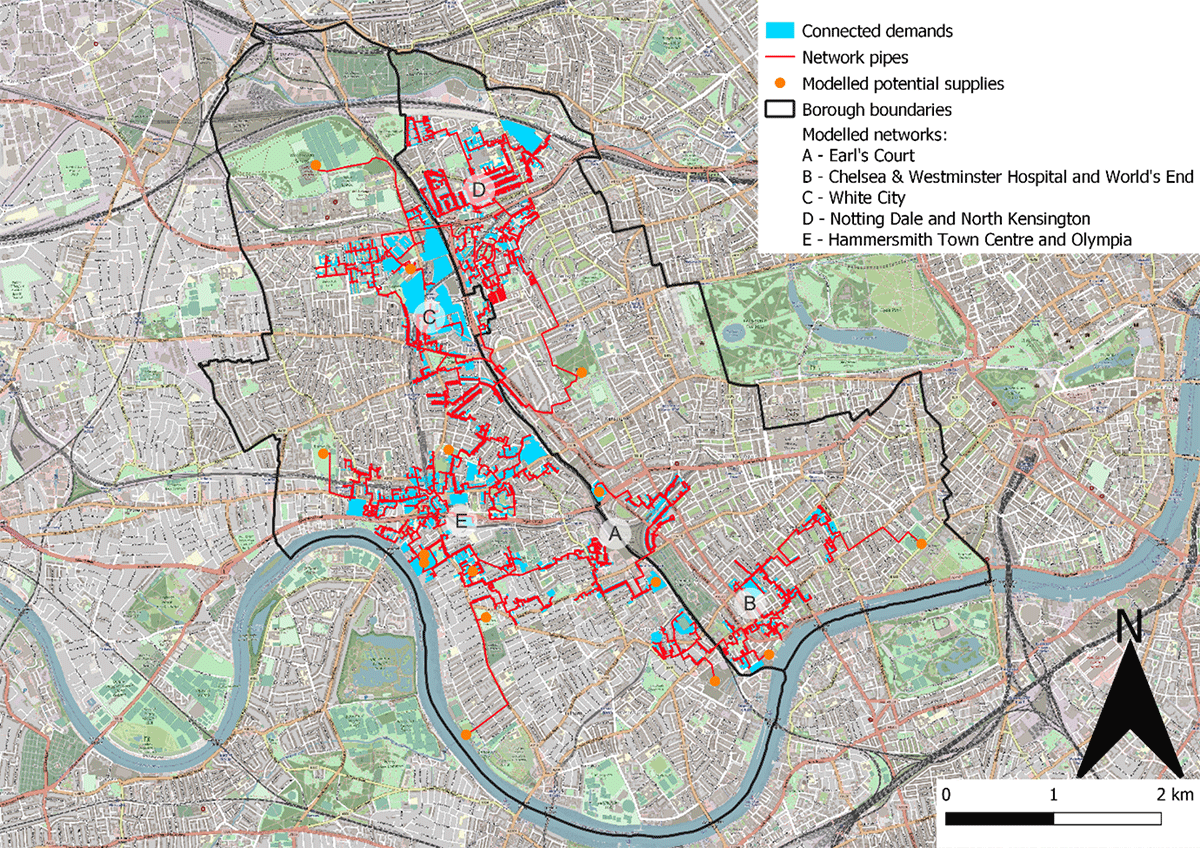Hammersmith & Fulham Council has produced a plan for net zero compatible district heat networks within the borough.
This work was undertaken together with Kensington and Chelsea Council and supported by the Mayor of London's Local Energy Accelerator Programme.
District heat networks
A district heat network is large-scale central heating system for a district or neighbourhood.
It consists of underground pipes carrying heat – or in some cases cooling - to a variety of different buildings in a local area.
It can be used to capture energy from zero-carbon or low-carbon heat sources providing an alternative to natural gas and helping H&F to meet its ambitious goal of net zero carbon by 2030.
This includes sources that can be found in the environment, such as air, river, and deep underground – including the tube network – as well as waste heat from other buildings, including data centres, the sewer system, and processes such as printing and brewing.
Energy masterplan
The Centre for Sustainable Energy has worked with the Council to collect data on heat consumption for existing and planned buildings, including businesses, shopping centres, hospitals, hotels, museums, schools, public buildings, and residential blocks.
Most of them currently rely on gas, a fossil fuel. Heating buildings currently accounts for nearly half of the carbon emissions in H&F.
The data gathered from these buildings was used to create the Cross-Borough Energy Masterplan. This plan highlights five key heat network opportunities, two of which are largely in H&F and a further two cross borough. The five networks highlighted are shown in the Map A below and are:
- Earl's Court – A
- Chelsea & Westminster Hospital and World's End – B
- White City – C
- Notting Dale and North Kensington – D
- Hammersmith Town Centre and Olympia – E
In addition to these five indicative networks, Hammersmith & Fulham Council is also installing ground source heat pumps at our new Civic Campus. These pumps will provide low-carbon heating to minimise our carbon footprint and cut energy bills for the council, residents and businesses.
Map A: The five indicative modelled heat networks

Data gathered by the Centre for Sustainable Energy shows that these large heat networks will be cheaper than installing individual heat pumps across the majority of the borough and will also emit less carbon. This is because heat networks work best at scale, and their potential for carbon and financial savings increases as they expand.
These large heat networks can also save a lot of money in the long run when compared to gas boilers. For example, over a forty year period, the modelled heat network in White City (shown in Map B below) would cost around £388 million. Over the same period, using gas boilers across White City would cost around £648 million if you include the additional costs they create from the pollution they emit.
Map B: Indicative network design showing the different phases of the White City network

Heat networks produce a lot less carbon pollution than gas boilers. Over a forty year period, the modelled heat network in White City would produce around 50,000 tonnes of carbon dioxide. Over the same period, using gas boilers would produce around 1.3 million tonnes of carbon dioxide – over twenty times as much.
If you would like to read the entire Cross-Borough Energy Masterplan, please access it below.
Get involved
If you are an H&F organisation, building owner, landlord of residential blocks or a commercial tenant interested in connecting to heat networks, or expanding or decarbonising an existing network, please email climate-emergency@lbhf.gov.uk